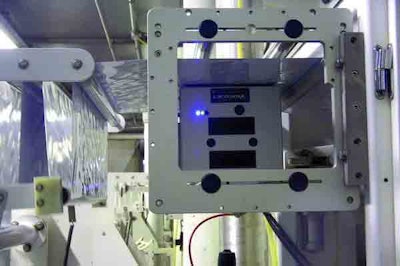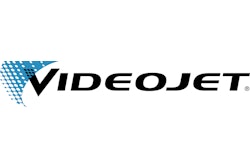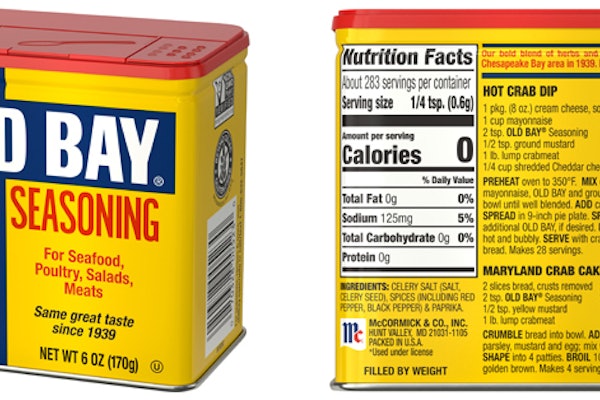Compared to multinational snack brands, Martin’s Potato Chips is a small operation that turns out an array of bagged salty snacks including popcorn and, of course, potato chips. Snackers in the Northeast U.S. count on Martin’s, while Martin’s counts on four side-by-side vertical form/fill/seal machines that produce a million bags of snacks monthly. Yet those workhorse baggers are no less critical than the coders that print information on each and every bag. If the coders, which are mounted on the backside above the film infeed web, are stopped for any reason, the bagger is stopped, and output stops with it.
Martin’s had printed its bags using contact coders since the early 1990s. These required operators for every product change to redo the metal typeset, a process similar to Benjamin Franklin’s day as a printer in nearby Philadelphia. Along with the time required for typeset changes, accuracy and readability had been a growing concern as wear and tear accumulated over time.
The printed message was prone to smearing, the ink took time to dry, and it would sometimes leave marks on the forming tube that could smear on the packaging film, according to Martin’s vice president of operations Glenn Zearfoss. Also, each coder could be expected to break down about three times weekly, he adds.
More than four years ago, Martin’s installed Videojet (www.videojet.com) Data Flex thermal-transfer printers on two of its baggers at its 75,000-sq-ft facility in Thomasville, PA. These units began coding improvements that would be completed four years later.
“The company looked forward to improving reliability with the Videojets,” says Zearfoss, who notes the main improvements:
• Accuracy. “Our date coding is always correct because it’s programmed into the coder itself—no one can pick the wrong number to put in the date code.”
• Print flexibility. “We have complete flexibility to print, larger or smaller, whatever we want.”
• Real-time coding. “The time of day is printed and can be used to trace packaging. We can look at the bag code and tell exactly which bagger and which operator.” Before, Martin’s was limited to a shift code, which could sometimes run as long as 10 hours, making precise tracking difficult.
Each bagger operates at a rate from 85/min on smaller bags to
35 bags/min on larger sizes. Sizes run from a 20-oz bag to 2⁄3 of an ounce (a 100 calorie bag). Although any size can run on any machine, Martin’s has modified two of the units to run the smaller bags fast.
The coders print a date code and product price, typically on one or two lines in letters 3⁄8” high.The code is changed for every shift and for every product; Martin’s runs about seven changes per bagger per day, a process that formerly took 3-5 minutes with typeset. Now recipes are stored on the unit and changed via the touchscreen, which Zearfoss says is about a 20-second process.
Zearfoss reports problems in the past of not having enough of the required type characters, such as cents symbols, when multiple products requiring the same specific character were running. “Now we can program any coding we want,” he says.
For new setups not in the database, personnel can use a data key or memory stick via USB interface at the touchscreen.
Martin’s was an early adapter of the Data Flex technology when the first Videojet printers were installed in late 2002, Zearfoss says. “We had success with them, but not without a few issues. Videojet did a very good job of standing behind the products. They made sure that any problems we had, such as with the power supply, were taken care of. Based on our history with those units, we were anxious to move to the new Data Flex Plus models when we could make it a priority with our capital spending.”
New and improved coders
They arrived in October 2006, when Martin’s installed next generation Data Flex Plus units on its two remaining baggers. “The new units have several advances that make them even better for our operation,” says Zearfoss.
One of those is significantly improved printhead connectors and an internal universal (110 or 220V) power supply. “These are now industrial grade and robust,” he reports. “That was a very good design improvement.”
Another feature Martin’s finds invaluable is the touchscreen’s USB port for data transfer via memory stick of new files or formats (see sidebar, above). Other new features include a flash card memory that makes variable data processing faster; “queue” feature to run several jobs sequentially and automatically; Web server capability; and a higher resolution LCD touchscreen.
Thrilling feedback
A telling testimonial that Zearfoss relates comes from the two workers that operate the four baggers and conduct all of the changeovers. “Our operators are thrilled with the coders because the changeover process has shortened by two to three minutes each time.
“Also, there is less time where the line is shut down during the shift to clean out the rollers and letter type to make it legible or to clean ink off the forming tube. That time also has disappeared.
“Our maintenance guys are thrilled with them because they don’t have to touch them.” Zearfoss says the old type coders would each break down at least three times a week.
“And our quality Quality Assurance personnel are thrilled with them because you can read the date and you can find out the time of day,” he says.
Despite their success with the Data Flex coders, it was not a given that Videojet would be the choice for the two newest units, according to Zearfoss, who was not here for the original install. “I checked with industry contacts to find out what coders others were using, and the brand that got rave reviews for intermittent-motion baggers was Videojet.” That reassurance settled things.
Based on its previous experience, for this latest install Martin’s had the mounting bracket already in place for the Videojet technician. Two hours later, the printers were operational. “He was in and out, and we were in business,” Zearfoss states. “It was the most painless machine installation I’ve ever been part of.”
Zearfoss, who has had experience with other types of printers, says “We are all very happy with using the thermal-transfer printers and the ribbons, rather than ink. They are economical and the legibility is excellent.” Martin’s uses a case of 24 ribbons every three weeks.
Zearfoss is unable to quantify payback for the printers, but notes that “there is a significant improvement in machine run times because of the improved changeover time and because of the lack of breakdowns.”
Those are the kinds of improvements that can be printed with black ink on the bottom line.



























